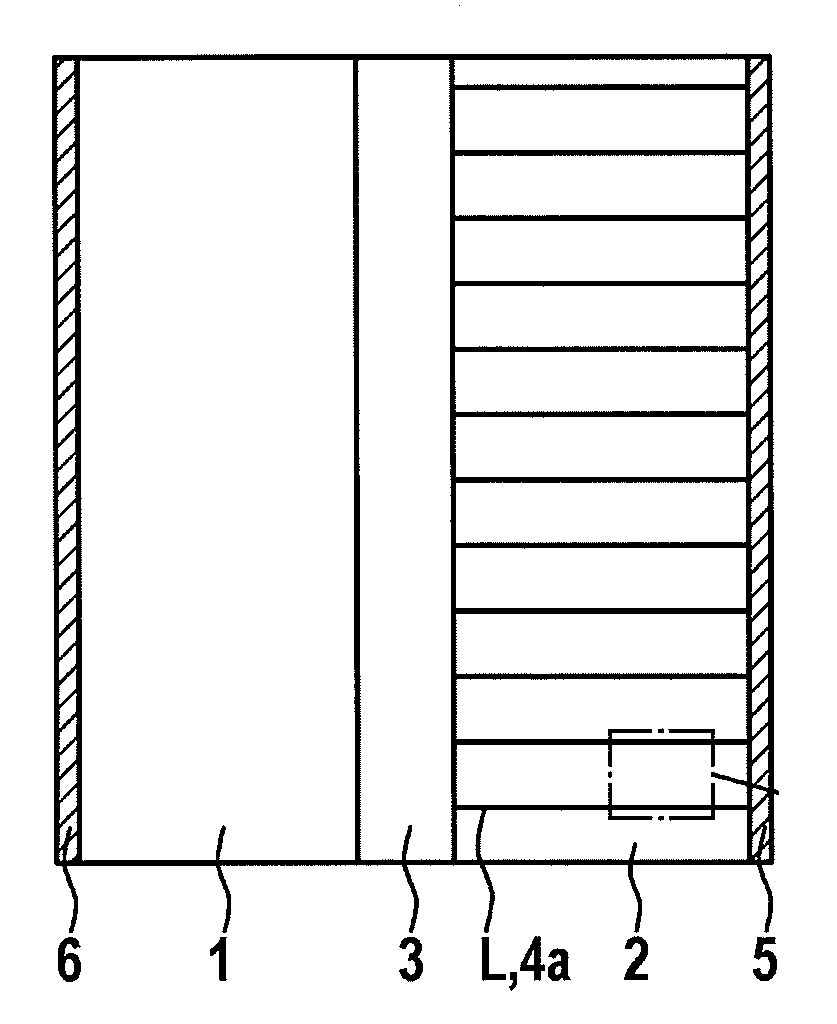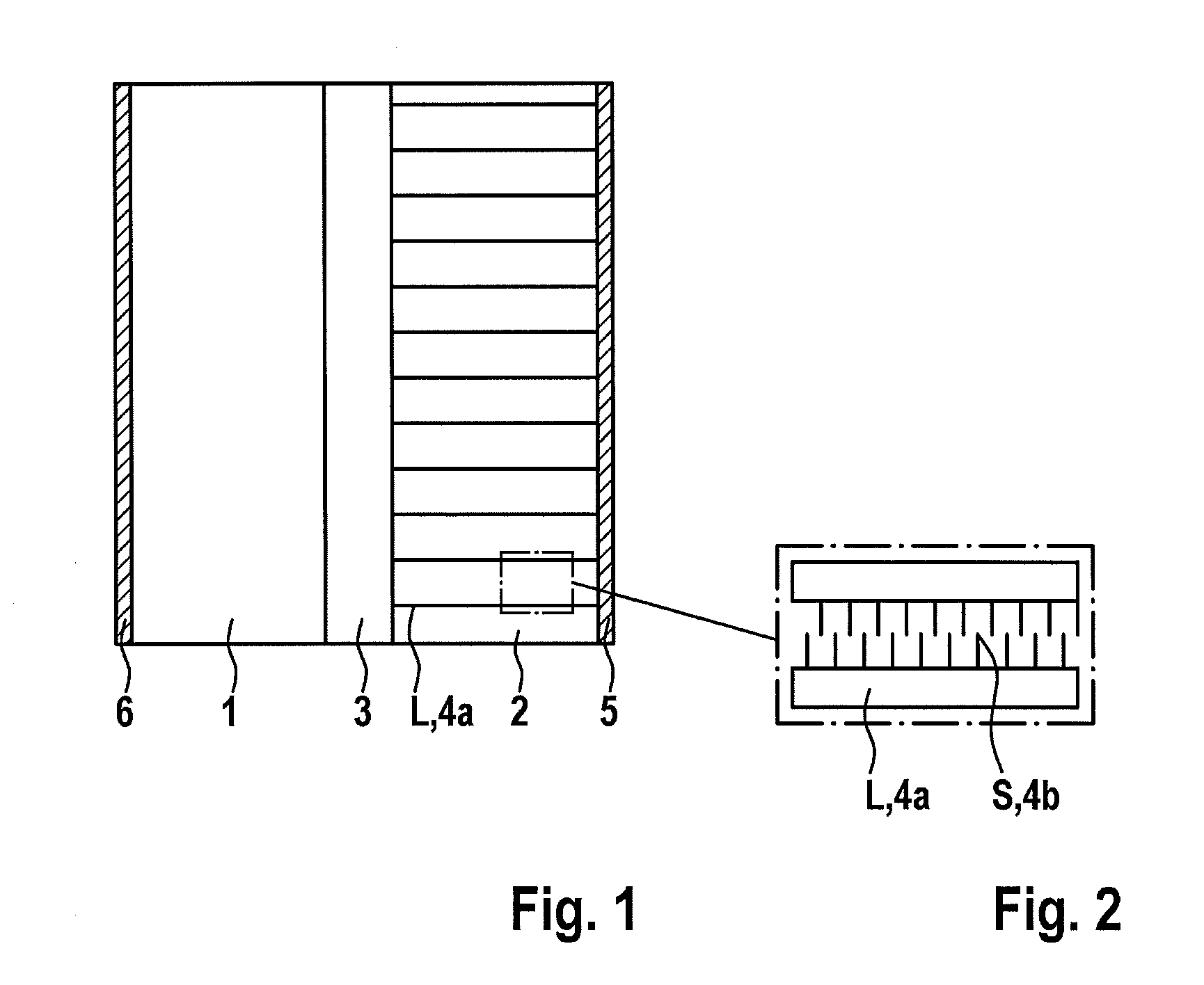Sodium ion conductor based on sodium titanate
a sodium titanate and conductor technology, applied in the field of sodium titanate ion conductors, can solve the problems of sodium anode reacting with the electrolyte the electrolytic solvent, etc., and achieves the effect of optimizing the overall energy density of the cell, increasing the electrical conductivity, and low electron conductivity
- Summary
- Abstract
- Description
- Claims
- Application Information
AI Technical Summary
Benefits of technology
Problems solved by technology
Method used
Image
Examples
Embodiment Construction
[0049]FIG. 1 shows that the sodium-chalcogen cell has an anode 1 containing sodium and a cathode 2 containing sulfur or oxygen. FIG. 1 further illustrates that anode 1 has an anode current collector 6, and cathode 2 has a cathode current collector 5, FIG. 1 shows in particular that anode 1 and cathode 2 are separated by a sodium ion conductor 3 which is conductive for sodium ions and nonconductive for electrons. This sodium ion conductor 3 may be made, for example, of polycrystalline β-aluminate, polycrystalline textured β-aluminate, a sodium titanate of tetravalent titanium, for example Na2TiIV2O2n+1, or a composite of β-aluminate and a sodium titanate of tetravalent titanium, for example Na2TiIV2O2n+1. FIG. 1 further illustrates that within the scope of this specific embodiment, cathode 2 includes a plurality of conducting elements L composed of a sodium ion conductor 4a which is conductive for sodium ions and electrons, one section of which in each case contacts sodium ion conduc...
PUM
| Property | Measurement | Unit |
|---|---|---|
| temperature | aaaaa | aaaaa |
| temperature | aaaaa | aaaaa |
| sodium ion conductivity | aaaaa | aaaaa |
Abstract
Description
Claims
Application Information
 Login to View More
Login to View More - R&D
- Intellectual Property
- Life Sciences
- Materials
- Tech Scout
- Unparalleled Data Quality
- Higher Quality Content
- 60% Fewer Hallucinations
Browse by: Latest US Patents, China's latest patents, Technical Efficacy Thesaurus, Application Domain, Technology Topic, Popular Technical Reports.
© 2025 PatSnap. All rights reserved.Legal|Privacy policy|Modern Slavery Act Transparency Statement|Sitemap|About US| Contact US: help@patsnap.com


